Results 10,511 to 10,520 of 12094
Thread: Anandtech News
-
04-15-20, 12:36 PM #10511
Anandtech: XPG Spectrix D50 Memory: A More Subtle RGB DDR4
ADATA's XPG division has unveiled its latest addition in the high-performance DRAM segment, the Spectrix D50. Starting from 8 GB DDR4-3000 modules, the latest Spectrix D50 kits will go up to 32 GB capacity, with some capacities hitting speeds of up to DDR4-4800.
XPG is the gaming division of ADATA, and has a broad portfolio of DRAM catering to multiple areas on the market. The latest from XPG is the Spectrix D50 which is similar to the Spectrix D60G, but with a more subtle take on RGB. Designed for enthusiasts and overclockers, it has a solid heatsink design with some interesting tweaks to make it look less aggressive than the D60G.
The heat spreader on the Spectrix D50 memory includes a criss-cross geometric design on its 2 mm thick heatsink and a triangular RGB panel that can be controlled via the XPG RGB Sync app. XPG claims it can be used with major motherboard manufacturers own software, but it doesn't officially state which. Users can customize the look with three available RGB presets which consist of static, breathing, comet, or even synchronize the effect to the sound of music.
The XPG Spectrix D50 will be available in single 8 GB modules and 2 x 8 GB (16 GB) up to DDR4-4133, with single 16 GB modules and 2 x 16 GB kits ranging up to DDR4-3600. Each kit itself varies in latency from CL16 on the DDR4-3000 and DDR4-3200 kits, with CL18 on the DDR4-3600 kits, each with an operating voltage of 1.35 V.
The higher speed DDR4-4133 kits are CL19 with a higher operating voltage of 1.4 V. All of the XPG Spectrix D50 kits support the latest Intel and AMD platforms through its integrated XMP 2.0 profiles.
All the XPG Spectrix D50 kits from DDR4-3000 to DDR4-4133 will start filtering into retail channels imminently, with the higher capacity 32 GB modules and the higher speed DDR4-4600/DDR4-4800 kits coming later on in Q2. XPG hasn't unveiled any pricing information at present.
Related Reading- SK Hynix: We're Planning for DDR5-8400 at 1.1 Volts
- TeamGroup Announces 32GB T-Force Vulcan Z and Dark Z DDR4 Modules
- G.Skill Launches 256 GB DDR4-3600 CL16 Memory Kit
- GIGABYTE Launches Designare DDR4-3200 Memory, a 64 GB Kit
- The Corsair DDR4-5000 Vengeance LPX Review: Super-Binned, Super Exclusive
More...
-
04-16-20, 09:14 AM #10512
Anandtech: Victory Lap: Team AnandTech Fights COVID, Beats Tom’s Hardware in Folding
Just under a month ago, I put out the call: AnandTech's readers were needed once more to defend the honor of the site in the most nerdy of contests: a Folding@Home race.
The distributed computing platform has been around for over a decade now, and it has taken on a new life as the novel coronavirus, SARS-CoV-2, has shut down a significant party of society. In light of the now global pandemic, the project has turned its eyes to trying to simulate the virus and potential treatment avenues for it, in order to hopefully speed up the development of a cure. A task that has been met with great enthusiasm from the public, as the combined power of the Folding@Home project has recently surpassed 2.4 ExaFLOPS, making it over an order of magnitude more powerful than any supercomputer in the world.
Overall, the project’s coronavirus research has come not a moment too soon, as many of us find ourselves essentially confined to our homes. And, after more than a month of this, we’re all starting to go more than a little mad. So mad, in fact, that AnandTech and Tom’s Hardware agreed to race each other over a four week period to see who could contribute the most to the Folding@Home project.
Those four weeks are finally up, and I am proud to report that Team AnandTech has emerged victorious, defeating our loyal opposition by over a billion points. It was, perhaps, never too close of a race, but I also know that the Tom’s Hardware readership (and its leadership) is never one to underestimated. So while Team AnandTech can take this moment to enjoy a victory lap in defeating its favorite punching bag for the third time in a row, it was a hard-fought race on both sides, and ultimately it all went to a good cause.
As always, I’d like to thank the AnandTech readers who chipped in to help with this race, as well as the Team AnandTech members who supplied their own computing power, as well as contributing to the stats tracking and other functions needed to host a proper race. To say that AnandTech couldn’t have done it without all of you is an understatement, and this is ultimately your victory.Folding@Home Race Results Team Points Team AnandTech 5,513,255,966 Tom's Hardware 4,419,576,007
Meanwhile, although we’re still not out of our home quite yet, hopefully the combined 9.9 billion points worth of work completed by Team AnandTech and Tom’s Hardware gets us one step closer to developing effective treatments for COVID, and getting everything at least a little bit back to normal.
Carousel Image Courtesy of: CDC/Alissa Eckert, MS
More...
-
04-16-20, 09:14 AM #10513
Anandtech: UL Delists MediaTek Powered Devices Due To Benchmark Whitelisting
Last week we detailed an article covering MediaTek’s seemingly widespread default inclusion of a benchmark whitelist in their chipset BSP (board support package) – a mechanism that enables more aggressive performance tuning of a device’s power management once it detects that a benchmark application is running.
Yesterday, UL, the developers of the PCMark and 3DMark benchmarking suites, have followed up on our investigation and analysed a wider range of devices, and have made the decision to temporarily delist all devices powered by a wide range of MediaTek SoCs, a list of over 50 devices from over 25 different vendors.
We had worked with UL early on in the investigation, with them providing us alternative anonymised versions of the benchmarks which bypass the whitelist detection, thus exposing the cheating behaviour.
The UL news post states:
“Using hidden mechanisms to detect benchmarking apps by name and make app-specific performance optimizations is not an "accepted industry standard." It is, in fact, the very opposite of the accepted standard.The statement is a harsh rebuttal of MediaTek’s public response to our article, again pointing out that the practice is anything but an “industry standard” – especially damning since it’s coming from one of the major benchmark developers in the industry.
Likewise, benchmark scores based on hidden app-specific optimizations and settings that are enabled by default and not available to the user do not accurately reflect a device's true performance in everyday use.
Simply put, a device must run a benchmark as if it was any other application. Performance gains must come from reacting to the nature of the workloads in the test rather than the name of the app itself.
As it has with similar cases in the past, we hope this delisting will help persuade MediaTek to change its approach and join the rest of the industry in adopting benchmarking best practices.”
As UL stated in their blog post, and what we also pointed out in our original piece, we hope that the negative reactions to the matter will convince MediaTek to abandon such practices and reconsider their view of what the “industry standard” is.
Related Reading:- Mobile Benchmark Cheating: When a SoC Vendor Provides It As A Service
- UL Delists Huawei Devices Due To Inaccurate Benchmarks
- Huawei & Honor's Recent Benchmarking Behaviour: A Cheating Headache
- Futuremark Begins Delisting "Cheating" Mobile Devices from 3DMark Database
- They're (Almost) All Dirty: The State of Cheating in Android Benchmarks
More...
-
04-16-20, 12:42 PM #10514
Anandtech: AMD COVID-19 HPC Fund: Initial $15m Donation of EPYC and Radeon Hardware
One element to the recent pandemic has been the number of organizations banding together to unite for specific research into SARS-CoV-2 and COVID-19. We are in an era now where masses of computing power can help direct physical research into potential vaccines, or help analyse interesting molecular active sites to spur further research. The COVID-19 High Performance Computing Consortium is one example of this, with 25 active products, 31 members, and approximately 418 PetaFLOPs of compute power – this is compared to the world #1 supercomputer, Summit, which has only around a third to a half of this processing power. The latest news is that AMD is setting up a unique COVID-19 fund to provide additional computing resources where they are needed most.
The fund will initially start with a $15 million USD donation of systems powered by EPYC processors and Radeon Instinct GPUs to some key research institutions. Those institutions interested in gaining access to this hardware will have to contact the fund (COVID-19HPC@amd.com) with proposals, and it appears that AMD will provide systems on a meritorious basis. AMD is also set to contribute resources to the ‘Corona’ system at Lawrence Livermore National Laboratory, separate to the fund, in order to double the peak system performance there. AMD is also donating $1m to a variety of other funds to help in efforts, in addition to medical equipment, employee donation matching, and prioritizing shipments of embedded processors for use in medical equipment such as ventilators.
Other tech companies with significant donations to COVID assistance include Intel who has offered one million protective items for healthcare, $6m for Coronavirus relief, $40m in learning initiatives, $10m to support partner and employee-led initiatives, and also opened up some of its IP to researchers and scientists. Xilinx has donated $1.1m, split between several funds including the WHO and closer-to-home funds. Qualcomm has donated an undisclosed amount to several funds, including supplying laptops and devices to schools and non-profits tackling the issue.
For compute, Alibaba is offering cloud services to COVID-19 research free of charge, while Amazon’s AWS, NVIDIA, and VMWare and is donating unused GPU compute time to help Folding@Home. The NVIDIA one is interesting, as it seems that they have put the Saturn V supercomputer, consisting of 125 DGX-1 nodes, onto the problem. The entire of the Folding@Home processing power is now north of 2.5 ExaFLOPs, despite only hitting the 1 ExaFLOP barrier just over two weeks ago. RIKEN’s new supercomputer, Fugaku, in Japan, was set to be fully installed by 2021, however the portion that is currently built is now being made available to researchers who can use the resources.
The COVID-19 High Performance Consortium is currently the biggest culmination of off-site compute resources for researchers that need time on supercomputers. XSEDE’s website has a guide for researchers to submit proposals for compute time.
More...
-
04-16-20, 03:25 PM #10515
Anandtech: ASRock Unveils Radeon RX 5500 XT Challenger ITX 8 GB Graphics Card
ASRock has announced its latest ITX graphics card for small form factors, the Radeon RX 5500 XT Challenger ITX. This new mini-ITX card is based on AMD's Navi 14 GPU and offers 8 GB of GDDR6 memory attached to a 128-bit bus, with the same core and memory clock speeds as a reference model.
Finding a graphics card for a small form factor system can be tiresome with very little on the market to choose from. One of the big trade-offs of graphics cards designed for small form factor systems is that beefier models such as AMD's RX 5700 XT, and NVIDIA's GeForce RTX 2080 Ti are too large in design to accommodate such a small PCB, which is where smaller cards designed particularly for the ITX form factor come in.
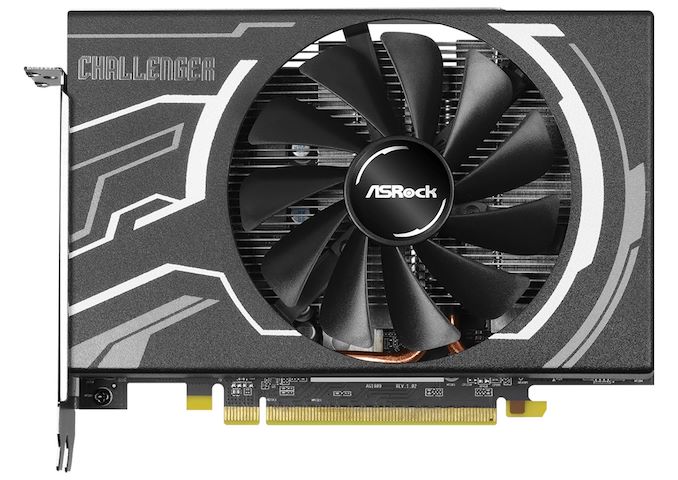
Focusing on the ASRock RX 5500 XT Challenger ITX 8G, it is very small for its power with dimensions of 190 x 139 x 42 mm, meaning that it is just under 7.5 inches in length. It features a single 10 cm cooling fan on its front, embedded in a white and silver dual-slot cooler, which is designed to direct hot air out of the rear of a chassis. The cooler on the ASRock RX 5500 XT Challenger ITX 8 G is actually longer than a reference model (7.5 vs 7.1 inches) but is still much smaller than most aftermarket designs from other vendors.
Physical size aside, the card is very similar in specifications to other 5500 XT cards on the market. The Challenger ITX ships with a base core clock of 1607 MHz and acn boosts up to 1845 MHz. Meanwhile the effective memory core clock speed of 14 Gbps. Unsurprisingly then, with its reference-like clocks, the card is targeted towards 1080p gaming.
As for display outputs, ASRock has outfitted the card a trio of DisplayPort 1.4 connectors as well as a single HDMI 2.0b port. Feeding the mini monster is a single 8-pin 12 V ATX PCIe power connector, which is more than sufficient to meet its 130 W TDP.
ASRock hasn't announced when the Radeon RX 5500 XT Challenger 8G will be available at retailers, nor has it provided any information about its price.
Related Reading- The AMD Radeon RX 5500 XT Review, Feat. Sapphire Pulse: Navi For 1080p
- ASUS Launches An Old GPU: The NVIDIA GT710 with Four 4K HDMI Ports
- EVGA Announces GeForce RTX 2070 Super KO & RTX 2080 Super KO
- NVIDIA's GeForce GTX 1650 GDDR6 Released: GDDR6 Reaching Price Parity With GDDR5
- PowerColor Extends Product Warranty by Three Months Due to Coronavirus
More...
-
04-20-20, 11:11 AM #10516
Anandtech: The ASRock Rack EPYCD8-2T Motherboard Review: From Naples to Rome
It's no secret that AMD is looking to carve out a bigger share in the server market with their enterprise EPYC processors, and much fanfare has been made about the high core-count offered for the price when compared to Intel's Xeon range of processors. The ASRock Rack EPYCD8-2T looks to utilize all of the processing power offered by AMD's EYPC, and the EPYCD8-2T has a professional-centric feature set built into its ATX design. We also have eight memory slots, up to nine SATA ports, has two OCuLink to U.2 slots, dual 10 G Ethernet, and seven PCIe 3.0 slots. This model also supports both AMD's EPYC 7001 Naples and 7002 Rome Processors.
More...
-
04-20-20, 11:11 AM #10517
Anandtech: HP Updates Pavilion x360 14 Series, A 10th Gen Ice Lake Convertible
In what has become a busy month for HP, the company has continued to update its array of laptops and other portable PCs with new Intel processors. The latest HP laptops to get the refresh treatment are the Pavilion x360 14" convertibles, which are being retooled to use Intel's 10th generation Ice Lake processors. Launching today, the two new HP Pavilion x360 14 series models are aimed at increasing productivity on the move with a couple of interesting features, including optional support for 4G LTE offering better connectivity on the go. Based on an improved lightweight design, the new HP Pavilion x360 14 is one of its thinnest yet, with a depth of just 18 mm and weight of 3.55 lb.
The new HP Pavilion x360 14 will be available in two configurations – a mid-range config and a low-end config – both sharing the same compact and lightweight frame, but with differing specifications. Both feature a 14" diagonal IPS touch screen panel which can be flipped 360 degrees to be used as a traditional laptop, or as a tablet with its edge-to-edge glass. Integrated into both models is a set of premium Bang & Olufsen speakers with the onus on entertainment, with HP claiming up to 13-hours of battery life based on FHD video playback.
As for the individual configurations, starting with the mid-range config, we have the HP Pavilion x360 14M-DW0023DX. This model is based on an Intel i5-1035G1 quad-core processor and comes with Intel AX201 Wi-Fi 6 wireless interface, 8 GB of DDR4-3200 memory in single-channel mode, and a 256 GB PCIe 3.0 M.2 SSD. It uses Intel's integrated UHD graphics to power a FHD 1080p IPS panel, which offers a brightness of up to 250 nits, and benefits from a luminous gold aluminium anodized frame; for those who demand elegance.
Meanwhile the lower-spec model, the HP Pavilion x360 14M-DW0013DX, includes an Intel i3-1005G1 dual-core Ice Lake processor, with 8 GB of DDR4-3200 memory (also in running in single-channel mode), and a slightly lower capacity 128 GB SATA based M.2 drive. This model also has a lower resolution 1366 x 768 screen, which has a brightness of 220 nits and a vertical brush patterned finish. For wireless connectivity it uses an Intel AC 9461 802.11ac wireless interface which also has support for BT 5.0 devices.
Since both configurations use the same body, they have the same 32% screen to body ratio, with a weight of just 3.55 lb and a thickness of 18 mm. There is also an HP Wide Vision HD webcam with a dual array digital microphone integrated, an HP Imagepad with multi-touch gesture support, and both models include a 3-cell 43 Wh Li-ion polymer battery. As for I/O, both models include a single USB 3.2 G2 10 Gbps Type-C port with DisplayPort 1.4 support, two USB 3.1 G2 Type-A ports, a headphone/microphone combo port, and a single HDMI 2.0 video output.
On top of the two models that's been launched, HP notes that the Pavilion x360 14 series will support up to 1 TB of SSD based storage, and be available with optional 4G LTE support. HP hasn't unveiled specifics as of yet, but we expect models to be available from HP featuring this soon.
Prices start at $499 for the Intel Core i3 Ice Lake model in a natural silver finish, with the higher-spec Core i5 model launching at $749 in warm gold. Both models are available now at Best Buy, and come next month HP will also be offering models in Forest Teal, with prices there starting at $550.
Related Reading- HP Announces ZBook Studio And ZBook Create Notebooks: Targeting The Top
- AMD's Mobile Revival: Redefining the Notebook Business with the Ryzen 9 4900HS (A Review)
- Intel Details 10th Gen Comet Lake-H for 45 W Notebooks: Up to 5.3 GHz*
- HP ENVY Laptop Refresh Adds OLED and RTX For 2020
- ASUS Updates Chromebook Flip Series With Intel 10th Gen Comet Lake
More...
-
04-21-20, 09:59 AM #10518
Anandtech: AMD Ryzen 3 3300X and Ryzen 3 3100: New Low Cost Quad-Core Zen 2 Processor
If one were critiquing AMD’s current line of Zen 2 processors, one of the things to note is that the cheapest option is $199, for the six-core Ryzen 5 3600. This puts the latest hardware from AMD out of reach for anyone building a gaming $900 system or below. In order to redress this balance, AMD is set to launch two new quad core designs in May, starting at $99. The new Ryzen 3 hardware will each feature one Zen 2 core chiplet, run at up to 4.3 GHz, and offer PCIe 4.0 connectivity.
A few years ago, the quad core processor was at the top of the market, and you would need $500 for one. When AMD started launching its quad core parts for as little as $99, the market became interested in what would become the new normal. These new Ryzen 3 parts from AMD, the new low-end quad cores, are helping define that normal, especially with high frequencies and taking advantage of the latest features such as high-speed DDR4, Zen 2 levels of IPC at high frequencies, and PCIe 4.0.
This is all well and good, and AMD has plenty of options at these price points to compete against Intel, however AMD’s biggest competition is going to be with itself. At these prices, $105 and $120, there are a number of AMD processors from the previous generations on offer that might be more appealing. For example, the 12nm+ version of the Ryzen 5 1600, called the ‘AF’ because the processor descriptor ends in AF, has slightly lower frequencies and IPC but has six cores and is only $85. Users will have to decide between more cores for throughput with the 1600AF, or more frequency/IPC with the 3100 for $15.AMD 'Matisse' Ryzen 3000 Series CPUs AnandTech Cores
ThreadsBase
FreqBoost
FreqL2
CacheL3
CachePCIe
4.0Chiplets
IO+CPUTDP Price
(SEP)Ryzen 9 3950X 16C 32T 3.5 4.7 8 MB 64 MB 16+4+4 1+2 105W $749 Ryzen 9 3900X 12C 24T 3.8 4.6 6 MB 64 MB 16+4+4 1+2 105W $499 Ryzen 9 3900 12C 24T 3.1 4.3 6 MB 64 MB 16+4+4 1+2 65W OEM Ryzen 7 3800X 8C 16T 3.9 4.5 4 MB 32 MB 16+4+4 1+1 105W $399 Ryzen 7 3700X 8C 16T 3.6 4.4 4 MB 32 MB 16+4+4 1+1 65W $329 Ryzen 5 3600X 6C 12T 3.8 4.4 3 MB 32 MB 16+4+4 1+1 95W $249 Ryzen 5 3600 6C 12T 3.6 4.2 3 MB 32 MB 16+4+4 1+1 65W $199 Ryzen 5 3500X 6C 6T 3.6 4.1 3 MB 32 MB 16+4+4 1+1 65W OEM Ryzen 3 3300X 4C 8T 3.8 4.3 2 MB 16 MB 16+4+4 1+1 65W $120 Ryzen 3 3100 4C 8T 3.6 3.9 2 MB 16 MB 16+4+4 1+1 65W $99
Not only this, but we are also awaiting the launch of AMD’s new APUs, called Renoir, for the desktop space. The performance of these parts at 15 W, a quad-core Zen 2 up to 4.3 GHz with Vega8 graphics (and no extra latency due to the chiplet) is going to be a compelling option when it moves to 65 W on the desktop. As a result, we might see the Renoir processors priced above the Ryzen 3, in that $125-$190 area that AMD currently doesn’t have any Zen 2 processors in.
For the rest of the year it seems there’s going to be some interesting competition in this low cost space. Intel also has Comet Lake-S on the horizon we believe, taking another crack at 14nm, and these new Ryzen 3 products might result in some interesting line-ups due to price.
We're expecting to get these CPUs in for testing sometime soon. They are set to be launched in May.
B550 Launch Coming Soon
One of the often talked topics, since January, is when AMD is going to launch its more mid-range B550 motherboards for the Ryzen 3000 processors. Today AMD is announcing that B550 is coming on June 16th this year, with all the main motherboard manufacturers coming out with a variety of models, up to 60 for launch. AMD is also confirming that B550 will offer PCIe 4.0 connectivity. More details to come at a later date.
Related Reading- AMD’s Mobile Revival: Redefining the Notebook Business with the Ryzen 9 4900HS (A Review)
- AMD Drop's Ryzen 3000 Pricing By Up to $50: Official Price Drop Until 31st March
- Updated AMD Ryzen and EPYC CPU Roadmaps March 2020: Milan, Genoa, and Vermeer
- All Ryzen: Q&A with AMD CEO Dr. Lisa Su
- AMD Zen 2 Microarchitecture Analysis: Ryzen 3000 and EPYC Rome
- The AMD Ryzen 5 2500X and Ryzen 3 2300X CPU Review
- AMD Ryzen 5 2400G and Ryzen 3 2200G Integrated Graphics Frequency Scaling
More...
-
04-21-20, 09:59 AM #10519
Anandtech: LG Teases "Velvet" Phone with Snapdragon 765
We’ve already been quite surprised by the fact that to date LG still hasn’t talked much about a successor to the G8. Last year, LG had explained that going forward with 5G smartphones, the new V series would become the new flagship devices of the company, and the G series would be relegated to 4G models. It seems that now a year later, that plan has been slightly altered and LG is planning to drop the G series naming altogether in favour of a new direction – both in marketing as well as product design.
Last weekend, LG teased its new “Velvet” smartphone design in an YouTube video on its Korean channel. It’s not a launch per-se, but it’s pretty much a complete unveil of the phone’s design as well as a disclosure that it’s being powered by Qualcomm’s Snapdragon 765 SoC platform.
The phone’s design is its most striking aspect, as it’s a complete design language overhaul for LG and a fresh breath of air which we haven’t seen from the company in several years now.
The design isn’t something we haven’t seen before from other vendors; however, LG’s execution here just looks like a more refined execution – a stark contrast to LG’s design language on what is seemingly a very bulky and industrial V60 series.
Particularly LG’s aesthetics on the cameras on the Velvet are quite unique as it houses a triple camera setup in a way that departs from the usual camera housing group and large bumps seen from other devices today. The main sensor seemingly is still of a larger size and requiring more z-depth and thus a camera protrusion, however the two other sensors are flush against the back glass of the phone – similar to what we saw on the G8.
The Velvet still keeps the 3.5mm headphone jack – which now makes LG essentially on of the very last vendors to even sport the feature anymore.
If LG is able to provide the Velvet with a good quality screen, a good camera experience and price the phone at a reasonable level – it looks like quiet the striking device that I’m sure would have a lot of success. We’re expecting a full device launch in the next few weeks.
More...
-
04-21-20, 12:23 PM #10520
Anandtech: European Processor Initiative Backed SiPearl Announces Licensing of Arm Ze
SiPearl, a new France-based company that is being backed and receiving grants from the European Comission’s European Processor Initiative project, has announced that is has licensed Arm’s next-generation Neoverse processor, codename Zeus.
SiPearl is still in its infancy as it’s only been founded in January of this year, but the new company has lofty goals as it aims to be the design house for Europe’s HPC goals.
Maisons-Laffitte, France, 21 April 2020 – SiPearl, the company that is designing the high-performance, low-power microprocessor for the European exascale supercomputer, has signed a major technological licensing agreement with Arm, the global semiconductor IP provider. The agreement will enable SiPearl to benefit from the high-performance, secure, and scalable next-generation Arm® Neoverse™ platform, codenamed ?Zeus?, as well as leverage the robust software and hardware Arm ecosystem.The announcement today more specifically covers the company’s licensing deal with Arm – pronouncing that they will be using the new “Zeus” core. Zeus follows up on the Neoverse N1 core “Ares”, and should be the infrastructure sibling to Arm’s Cortex-A77 mobile cores.
Taking advantage of the Arm “Zeus” platform, including Arm’s POP™ IP, on advanced FinFET2 technology enables SiPearl to accelerate its design and ensure outstanding reliability for a very highend offering, in terms of both computing power and energy efficiency, and be ready to launch its first generation of microprocessors in 2022.
On the EPI website, the EC also details a roadmap of the project, with the detail of “N6” alongside the Zeus core description, which likely means the chip will be designed on TSMC’s N6 process node – an improved and evolved variant of the manufacturers N7 node which retains design compatibility.
The project is another boost to the Arm server ecosystem after the latest success of Amazon’s Graviton2 chip as well as Ampere’s announcement of the Altra platform which we’ll be seeing in a few months’ time.
Related Reading:- Arm Announces Neoverse N1 & E1 Platforms & CPUs: Enabling A Huge Jump In Infrastructure Performance
- Arm Announces Neoverse Infrastructure IP Branding & Future Roadmap
- Amazon's Arm-based Graviton2 Against AMD and Intel: Comparing Cloud Compute
- Next Generation Arm Server: Ampere’s Altra 80-core N1 SoC for Hyperscalers against Rome and Xeon
- 80-Core N1 Next-Gen Ampere, ‘QuickSilver’: The Anti-Graviton2
More...
Thread Information
Users Browsing this Thread
There are currently 17 users browsing this thread. (0 members and 17 guests)




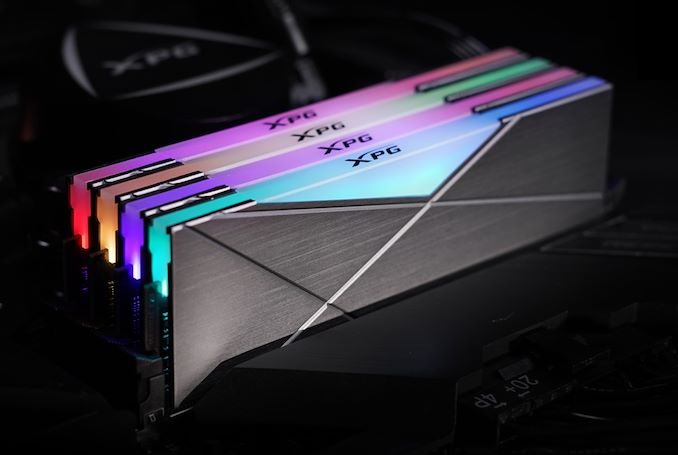

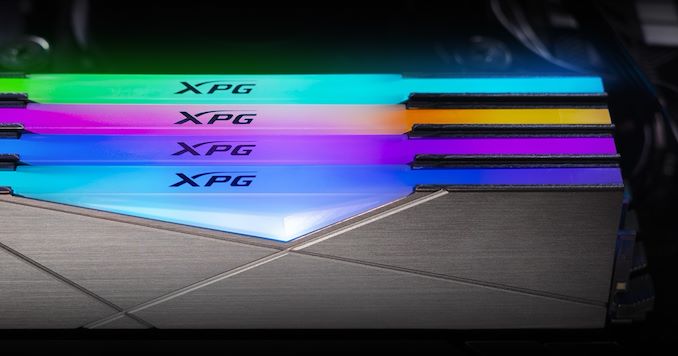

 Quote
Quote


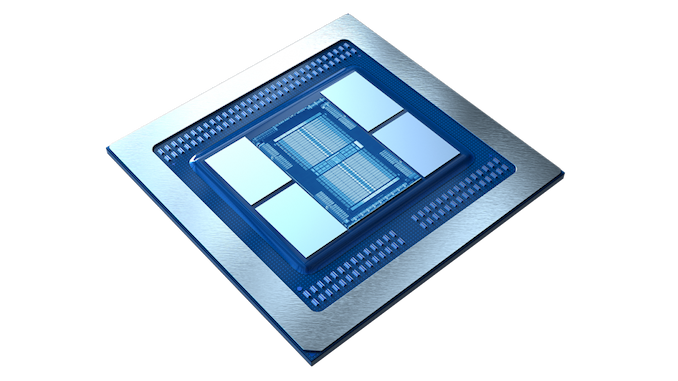
 jpg_575px.jpg)
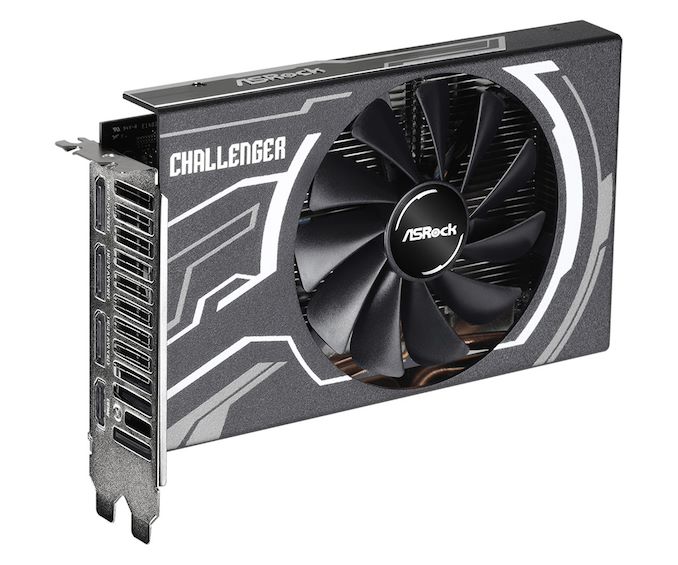


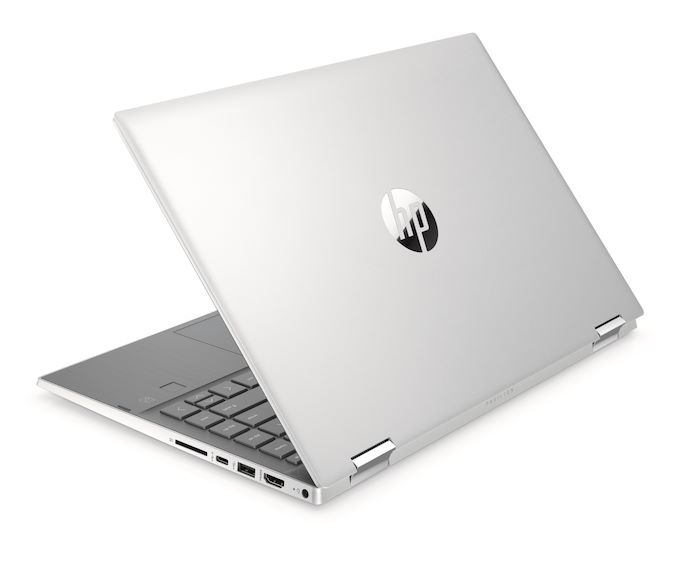

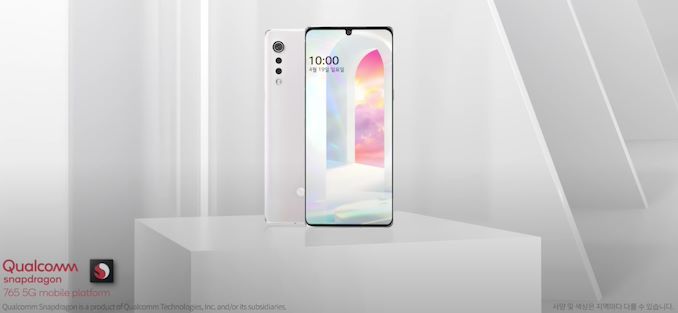

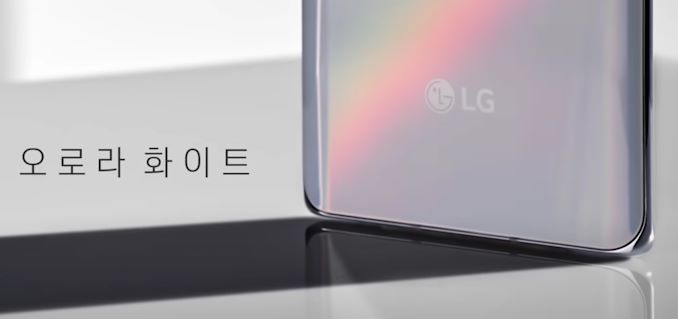
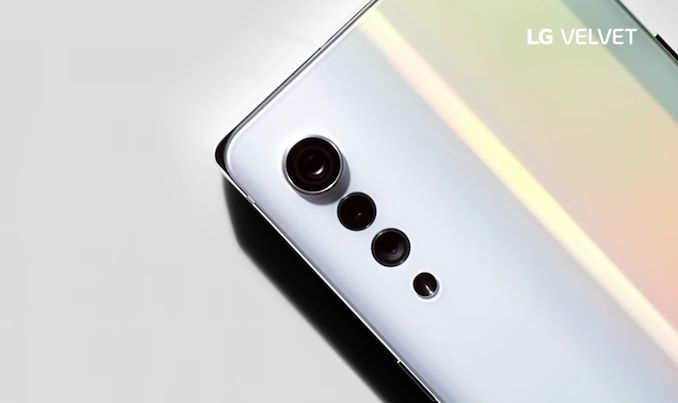
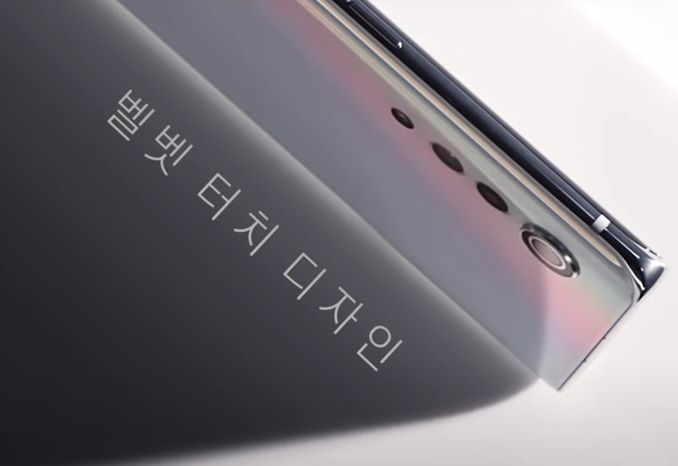
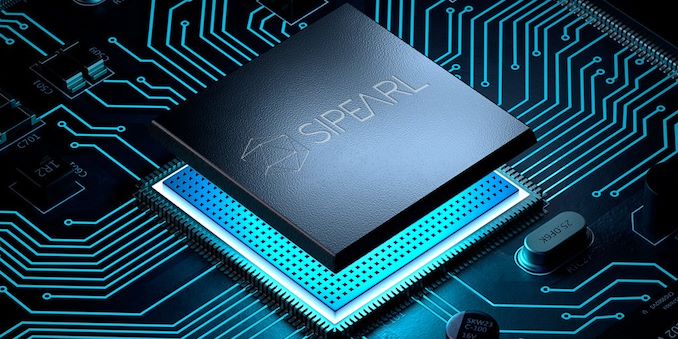
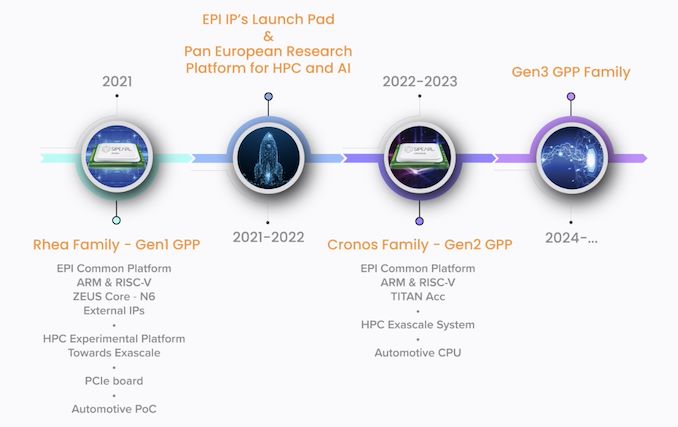
















Bookmarks